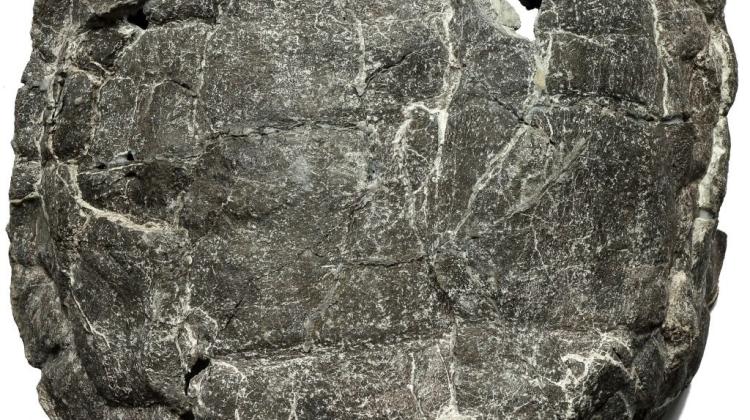Polish research sheds new light on the evolution of tortoises

Prehistoric tortoises from Poland may be crucial in understanding the evolution of the entire group of these animals - writes Tomasz Szczygielski in the Royal Society Open Science.
Tortoises belong to extremely specialized vertebrates. They have a very short torso, built of only ten vertebrae, and a relatively long, busy neck. The most distinctive feature is the shell that includes ten ribs and horny scales called scutes.
"Recent research by US researchers suggested that most of the unusual features of tortoises were inherited from the African reptile Eunotosaurus africanus that lived in the Permian, some 260 million years ago, and had an even shorter torso. However, new observations made on the late Triassic (about 215 million years ago) tortoises from Poland and Germany allow to question this hypothesis" - explained Tomasz Szczygielski from the Institute of Paleobiology of the Polish Academy of Sciences.
Together with Tomasz Sulej (Institute of Paleobiology PAS) he conducted research on Proterochersis porebensis from Poręba near Zawiercie (Silesian province). The species is a representative of the oldest and first known type of fully shelled tortoises.
Despite the fact that its body is essentially reminiscent of modern tortoises, many of its features are very primitive. Szczygielski\'s new study indicates that one of these features is a longer spinal column.
Proterochersis still had eleven thoracic vertebrae and as many as ten ribs built into the shell. In slightly younger Proganochelys from Germany, the first of these vertebrae gradually began to adopt the features of the cervical vertebra, and the first pair of ribs was excluded from the shell.
Finally, over a few million years after the formation of solid shell, the vertebra lost its ribs and gained considerable mobility, and the turtles eventually achieved their modern anatomy.
Genetic studies show that the Hox-6 gene that determines the boundary between the cervical and thoracic segments is responsible for this.
According to the palaeontologist, the first real (fully shelled) tortoises represented by Proterochersis porebensis had 11 thoracic vertebrae. Later the first vertebra was freed from the shell, began to change and take the form of a cervical vertebra. This gradual process is traceable in the slightly younger tortoises from Germany.
Szczygielski analysed the relationship between tortoises. According to his conclusions, in many respects the Eunotosaurus is more like the advanced members of this group than its more primitive members.
Moreover, the most important of these similarities could have evolved in the Eunotosaurus independently, due to his presumed underground lifestyle.
According to Szczygielski, the position of this animal as an ancestor of tortoises is therefore uncertain.
"These findings underscore the role of Polish Triassic tortoises in understanding the evolution of the whole group and show that fossils can give insights not only into the kinship and functioning of extinct animals in their environment, but also the activity of their genes" - he added.
The publication is available on the Royal Society Open Science website: http://rsos.royalsocietypublishing.org/content/4/4/160933
PAP - Science and Scholarship in Poland
krx/ agt/ kap/
tr. RL
Przed dodaniem komentarza prosimy o zapoznanie z Regulaminem forum serwisu Nauka w Polsce.















